Road-trip EV charging often doesn’t always give traveling motorists the break they need. But it can and will get more convenient, and one such template, from startup Rove, was revealed this past week in Southern California.
Rove broke ground and detailed plans for its inaugural charging center, in Santa Ana, California, which appears to check a lot of boxes that have been the subject of frustration for motorists.
For the past decade or more, access to the fastest EV chargers has often meant leaving the car at the middle (or outer edge) of vast big-box retailer parking lots, then crossing them and walking along service roads, often lacking sidewalks, to get to the any kind of service while the car is charging.

Rove charging center - Santa Ana, California (rendering)
Each of Rove’s facilities, including the one in Santa Ana, looks to be an antithesis to that, and something closer to the high-end, car-focused interpretation of what motorway travel oases provide in some countries and regions.
It plans to open 20 of them by 2026. They’ll include 40 publicly accessible DC fast-chargers, plus a 24/7 indoor lounge, outdoor seating with wifi, clean restrooms, an eco-friendly car wash using 80% or more reclaimed water, and a Recharge by Gelson’s market. There will also be nighttime security guards and a fenced-in pet area.
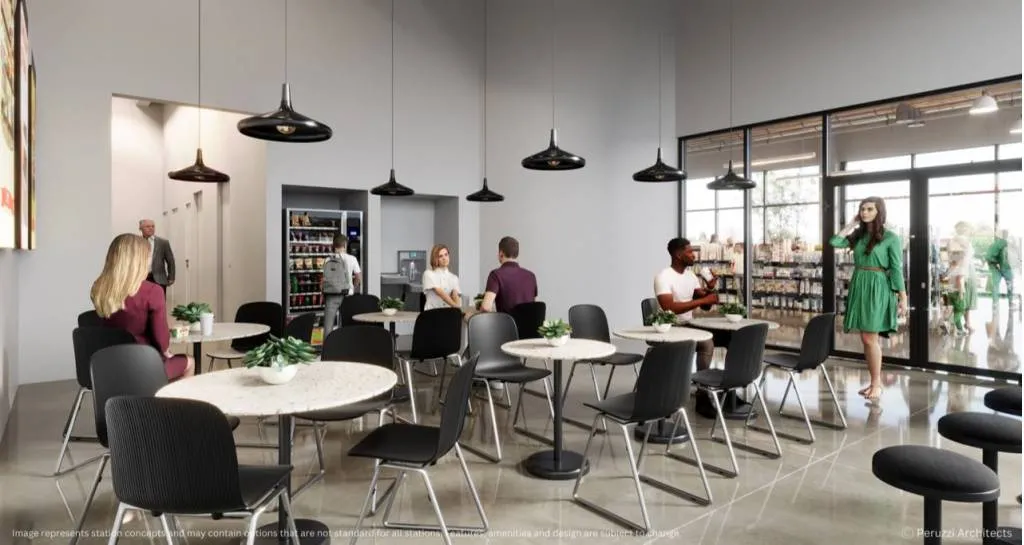
Rove charging center - Santa Ana, California (rendering)
Each location will host more than 40 DC fast-chargers, and some of them will offer up to 350 kw, according to Rove. They’ll have single cords dedicated to the offered power, Rove says, so you won’t be slowed down if more cars show up, but different connectors will accommodate every EV. And there will be ways to charge CHAdeMO EVs as well as those using CCS and Tesla/NACS ports.
Rove wouldn’t say whether it’s depending on charging or the rest of the facility as the primary revenue-generator. “We expect each service—charging, market, car wash, etc.—to contribute to the center's success,” the company replied to Green Car Reports.
To that point, the company says that there will be no membership fee and customers will be charged by the kwh per the market rate.
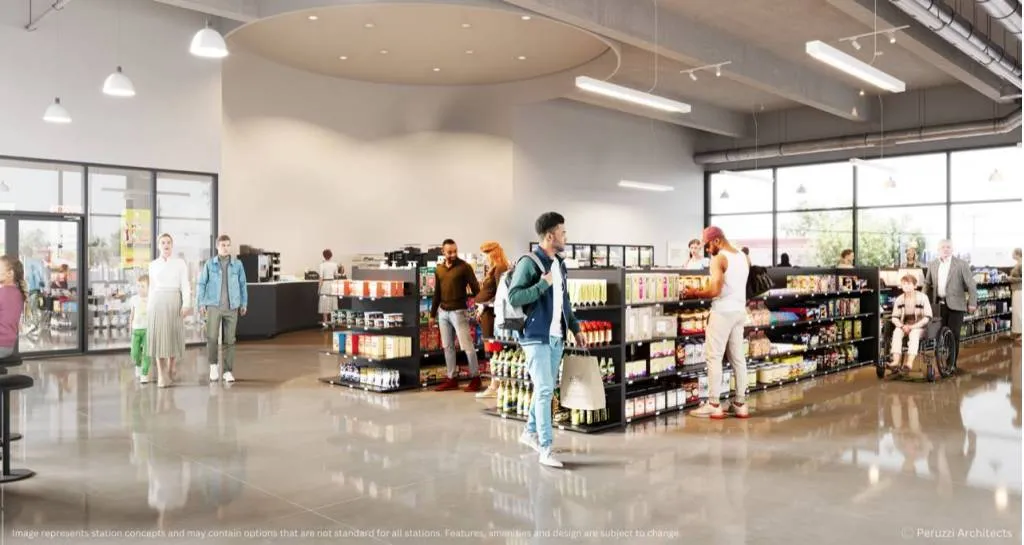
Rove charging center - Santa Ana, California (rendering)
The markets, Rove says, will be approximately 5,000 square feet in size—about double the size of a traditional 7-Eleven—and run by Southern California grocer Gelson’s. They’ll be stocked with meals, beverages, and grocery staples, Rove says, so if you need to stop along a long commute for home-pantry items, you may actually be saving some time versus other charging stations.
The stark, parking-lot locations aren’t typically chosen as part of some bleak, bare-bones vision of what charging should be. As Electrify America explained in 2020, location is everything in siting EV fast-chargers, and it’s often a matter of real estate and how it can site stations with respect to the grid while fitting the cars and hardware.
That said, there are many indications that automakers and charging companies are willing to sacrifice some of the pragmatic points for the sake of driver convenience and an experience that’s as futuristic and inspiring as the cars.
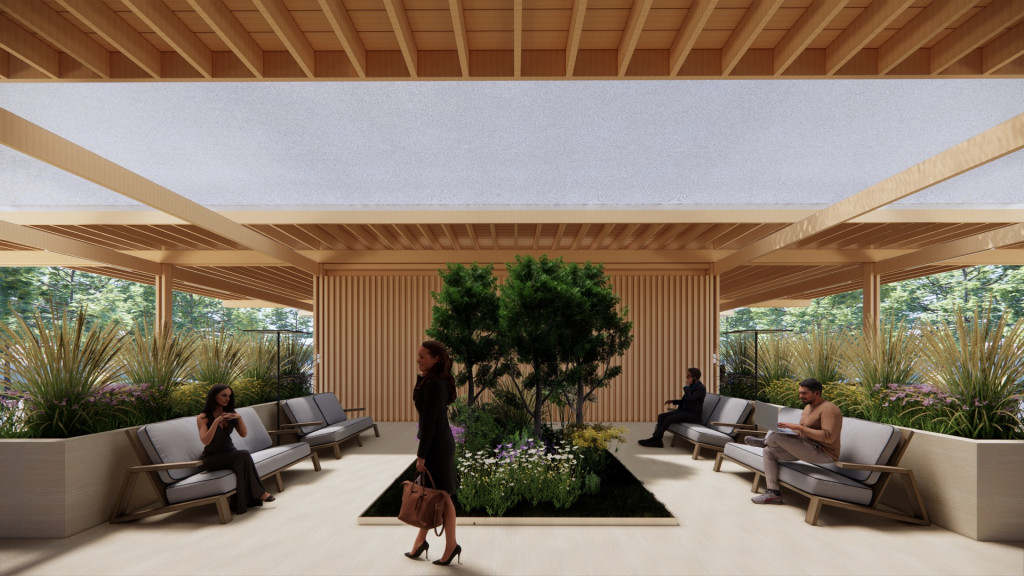
Electric fueling station of the future -
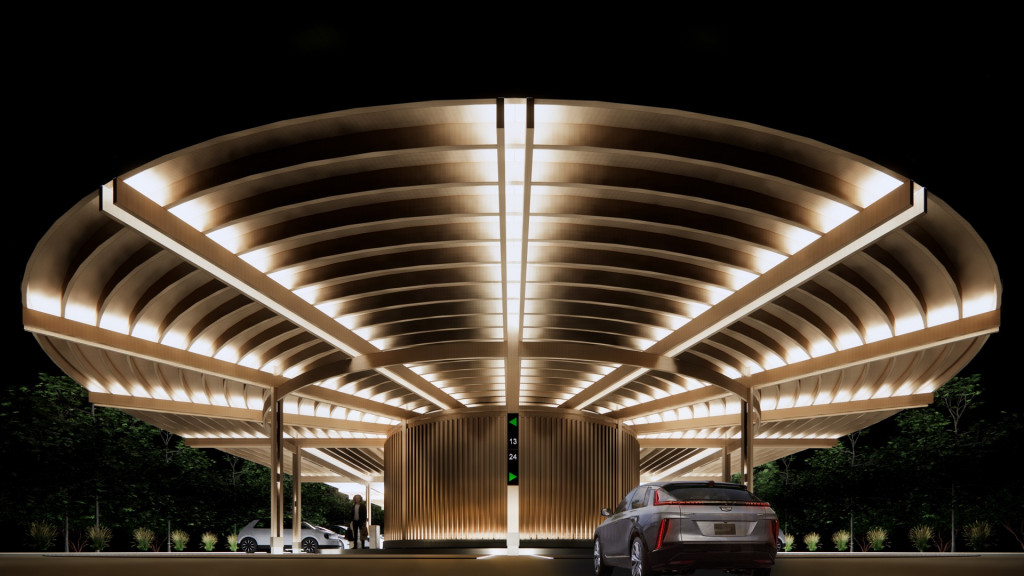
Electric fueling station of the future -
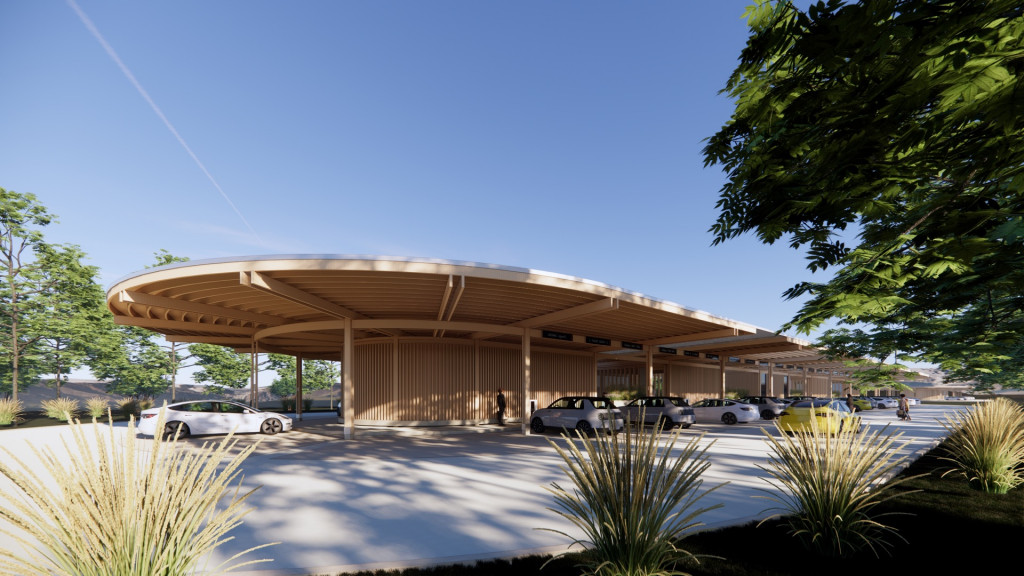
Electric fueling station of the future -
For instance, the winners of a 2022 design competition called “The Electric Fuelling Station of the Future” suggest that the future of EV charging doesn’t look like clusters of chargers on blacktop, but more like a gas station, but with more services. That’s because of a reality that people will tend to stay longer when charging an EV.
That may take various forms. The convenience-store industry in the U.S. doesn’t want to be left behind in this, and it’s pitched itself as an ideal way to bring EV charging to rural America. On the upmarket direction, Mercedes-Benz has said that its upcoming charging network will include luxurious facilities with restrooms and video surveillance. And Porsche has shown design-savvy charging oases with workout areas and rooftop solar.
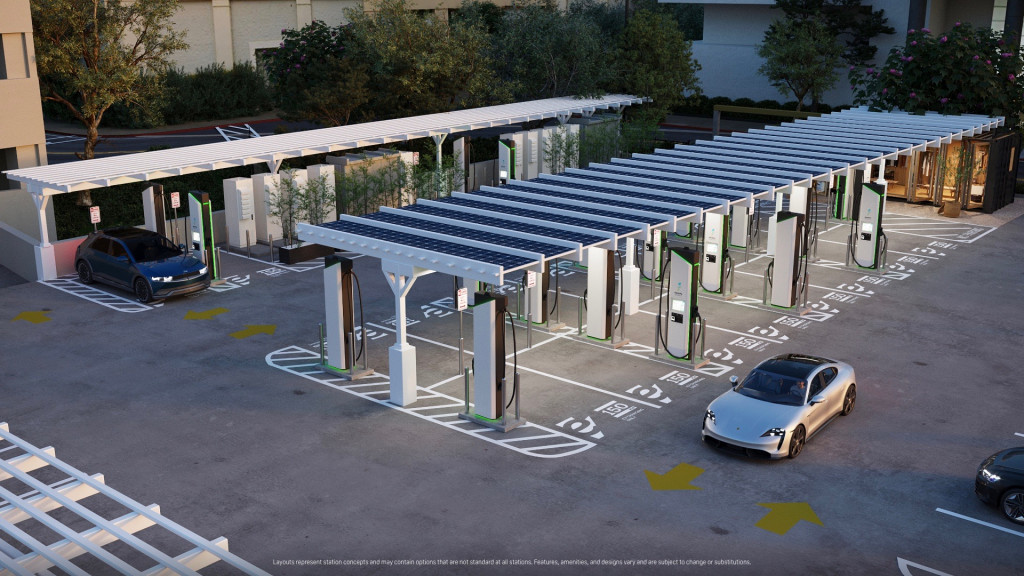
Electrify America upscale charging concepts
Electrify America has also presented the design for a different kind of charging station, with solar canopies, customer lounges, and valet services. Such locations haven’t yet come to fruition, but with pending rivalry with Tesla’s Supercharger network and the soon-to-take form network funded by seven major automakers, charging is going to get a lot more convenient soon.













